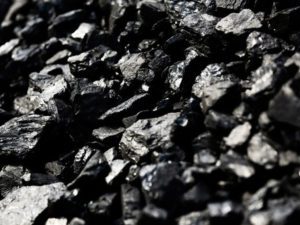
Ukraine in 2019 reduced import of coal and anthracite (foreign trade activity code 2701) by 1.4% (by 305,334 tonnes) compared to 2018, to 21.082 million tonnes.
According to the State Fiscal Service, coal was imported for $2.816 billion, which is 7.2% less than in 2018 ($3.035 billion).
At the same time, coal for $1.638 billion (a share in imports is 58.18%) was supplied from Russia, while the United States delivered coal for $888.485 million (31.55%), Kazakhstan for $134.228 million (4.77%), and other countries for $154.912 (5.5%).
In addition, in 2019 Ukraine exported 14,938 tonnes of coal and anthracite for $724,000, including to Moldova for $585,000, Hungary for $103,000, Poland for $32,000, and other countries for $4,000.

Ovostar Union, a leading egg producer in Ukraine, cut egg sales by 17% in 2019, to 1.147 billion eggs.
According to a company report on its website, egg production last year fell by 2.35, to 1.587 billion. The share of exported eggs of total sales grew by 4 percentage points in 2019, to 46%, and exports totaled 525 million eggs compared with 587 million in 2018.
“The decrease of shell eggs sales is accounted for by the significant reduction of trading operations in 2019. Average price of eggs in UAH terms fell by 12% y-o-y and reached UAH 1.606/egg, while in U.S. dollar terms the decrease was 7% y-o-y and the price for the year was $0.062/egg (2018: UAH 1.819/egg or $0.067/egg respectively),” the company said.
In 2019 the volume of eggs processed was 577 million, which by 9% exceeds the level of the previous year.
The volume of dry egg products output grew slightly y-o-y and reached 2,969 tonnes. The output of liquid egg products increased by 12% y-o-y up to 13,904 tonnes.

The shareholders of HD-group (formerly the Khlibodar group of companies), Serhiy Chekalsky, Borys Shestopalov and Agroservice 2000, which is part of HD-group, have announced the creation of the Stock Capital (Fondovy Kapital) investment fund, whose assets will amount to $20 million, the group’s press service has said. According to its press release, the fund was created with the aim of consolidating the resources of HD-group, managing core acquisitions in 2020-2021, and implementing direct and portfolio investments in the agri-food segment (processing, production and food startup projects).
The group indicated that Stock Capital would be managed by AMC Slavutich Invest.
“Opening an investment fund is the next step on the way to the development of HD-group. We have implemented most of the project in the field of transformation, created a whole set of internal services that ensure the functioning of all business processes related to the fulfillment of the key mission of the enterprises included in HD-group: delivery of high-quality and safe products to customers. We believe that the holding is ready for not only organic market growth, but also inorganic through transactions to acquire new enterprises,” the press service said citing co-owner of HD-group Borys Shestopalov.
HD-group was founded in 1998 as Khlibodar in Zaporizhia. In 2019, it was transformed into HD-group. The group includes grain processing plants, bakeries and flour confectioneries, a plant for production of jam, preserves, groceries, procurement and logistics companies.

Prime Minister of Ukraine Oleksiy Honcharuk has said he hopes that a large-scale building of roads will start on March 1, 2020.
“Since March 1, a large-scale building [of roads] to start…This year it is necessary to prepare for the most early start of the season. We, in turn, will try to complete all the procedures by this moment,” he said during a press conference Roads UA 2020 in Kyiv on Monday.
He also asked the Antimonopoly Committee of Ukraine (AMCU) to favor this.
“We know that there are certain difficulties, that someone is doing stupid things: disputes every second tender in the Antimonopoly Committee. We ask the Antimonopoly Committee of Ukraine do not accept such a model of behavior. Respond by the quick, honest work,” Honcharuk added.

Ukrainian pianist Nadia Shpachenko has received the prestigious Grammy Music Award, the award website reports. The pianist’s album “The Poetry of Places,” which was recorded with Joan Pearce Martin, Nick Terry and Corey Hills, won the category “Best Classical Compendium.”
Nadia Shpachenko was born in Ukraine. In 1991, she moved to Israel with her mother, and in 1994 she moved to the United States to earn a bachelor’s degree in classical music in Cambridge. She her piano classes from the age of five, and by the age of 13, she gained recognition as a pianist and composer, performing with the Kharkiv Philharmonic Symphony Orchestra and taking the second place in the All-Ukrainian competition of young composers.
Shpachenko received the title of Doctor of Musical Arts and Master at the University of Southern California, and graduated with excellent marks. Among her teachers are John Perry in Los Angeles, Victor Rosenbaum in Boston, Victor Derevyanko in Israel, and Serafima Schwartz in Ukraine.

The Boryspil international airport from January 26, 2020 started temperature screening of passengers arriving directly from China, specialists and equipment have been prepared, the Health Ministry of Ukraine has reported. “From January 26, screening of passengers arriving directly from China will begin at the Boryspil airport. The sanitary-quarantine department specialists have already been trained and equipped with infrared thermometers,” the ministry said on its Facebook page on January 25 in the evening.
It is also reported that on Saturday the World Health Organization (WHO) updated screening guidelines at points of entry into countries where the spreading of a new coronavirus has not yet been recorded.
“Previous WHO experience has shown that introducing body temperature screening to identify potential suspected cases of coronavirus required significant investments and was not effective enough. However, during the outbreak of coronavirus 2019-nCoV, most cases of illness at airports were detected precisely because of temperature screening. This method reduces the risk of introducing the coronavirus into the country,” the Health Ministry said.
Also, to minimize the risk of coronavirus infection, WHO recommends routine SARS prevention activities.
As reported, a pneumonia outbreak in the Chinese city of Wuhan began in December 2019, as a result of a new strain of coronavirus.